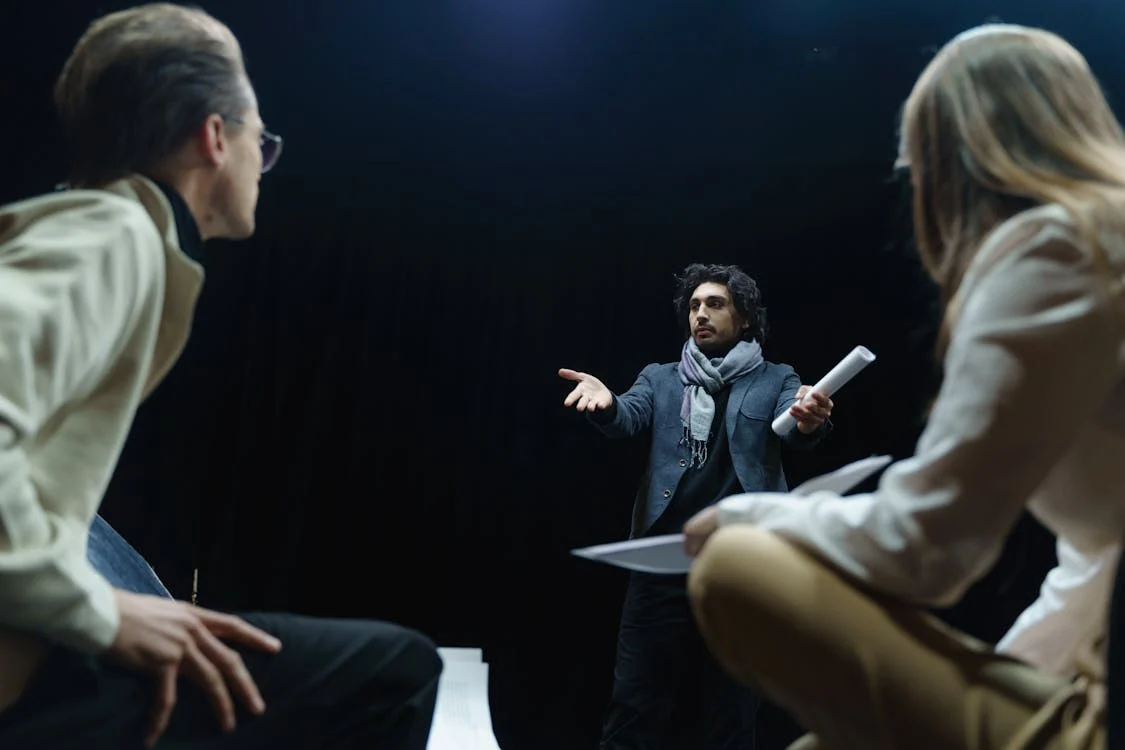How Do Acting Callbacks Work?
An In-Depth Look into the Audition Process and What Happens After the First Round
(By Javier Guerra)

(Photo: Cottonbro | Pexels)
Acting callbacks are a crucial part of the audition process for actors. They occur after an initial audition where casting directors and producers assess an actor’s suitability for a role. If an actor is called back, it signifies that they have piqued the interest of the decision-makers. However, what happens during a callback, and how do actors prepare for this important second step? In this article, we’ll break down the process of acting callbacks, what they mean, how to prepare, and examples of what happens during the callback process.
What Is a Callback in Acting?
A callback is a second audition that occurs after an initial casting audition. If you’ve been asked to return, it means the casting director wants to see more from you to decide whether you are a suitable fit for the role. Callbacks often involve more specific and detailed instructions than the first audition, and may include reading additional scenes, meeting with producers, or performing in front of the director and other decision-makers.
Why Are Callbacks Important?
Callbacks are essential because they allow the casting team to assess how well an actor fits with the role and the overall vibe of the project. It’s not just about acting ability—casting directors are also looking for chemistry with other actors, physical appearance, and how well you take direction. This is where the final decisions are often made about who will be cast in the role.
What Happens During a Callback?
Callbacks vary depending on the production, but they often have the following components:
-
Cold Read: You may be given a new scene that you haven’t seen before and asked to perform it. This tests your ability to quickly adapt and bring the character to life.
-
Chemistry Reads: In some cases, you’ll be asked to read with other actors to test the chemistry between you and your potential scene partners. This is crucial for roles that require specific interactions between characters.
-
Direction: The casting director or director may give you new direction during the callback. This is to assess your ability to take and adjust to feedback on the spot.
-
Q&A: There may be a short Q&A session where the director or producer asks you questions about your approach to the role or about your acting experience. This helps them understand your personality and commitment to the project.
How Do You Prepare for a Callback?
-
Know the Material: While you may be given new scenes at the callback, knowing your previous audition material is still important. You might be asked to perform those scenes again.
-
Be Ready for Cold Reads: Prepare yourself for the possibility of receiving new material you’ve never seen before. Practicing cold reading techniques can be very helpful.
-
Stay Confident: Callbacks are an opportunity to show the director who you are as an actor, but also as a person. Stay confident in your abilities and remember that the casting team liked your initial audition enough to bring you back.
-
Practice Taking Direction: Be prepared to adjust your performance if the director asks you to do something different. Flexibility is key.
What to Expect After the Callback
After the callback, the casting team will deliberate on their choices and determine who they want to cast in the role. If you’re successful, you’ll either receive an offer or another call to further discuss the role. If not, you may not hear back, or you could be given feedback. The waiting period can be tough, but patience is important in this industry.
Examples of Successful Callbacks
-
Scarlett Johansson – “Lost in Translation”
Scarlett Johansson had a callback for the film “Lost in Translation” after her first audition caught the attention of director Sofia Coppola. Johansson was asked to read several scenes during the callback, showcasing her ability to portray the character’s vulnerability. Ultimately, Johansson was cast in the role of Charlotte, which helped launch her into stardom. -
Robert Downey Jr. – “Iron Man”
Robert Downey Jr.’s callback for the role of Tony Stark in “Iron Man” was legendary. Director Jon Favreau had Robert read a scene multiple times with different direction. Downey’s unique portrayal, along with his improvisational skills, won him the role that would become iconic.
What Happens if You Don’t Get the Callback?
Not receiving a callback after an audition can be disappointing, but it is not a reflection of your talent. Casting decisions are based on a multitude of factors, and sometimes, the decision is made purely on who fits the vision the director has in mind. It’s important to continue auditioning, learning, and improving your craft. Callbacks are a positive step, but remember, they are just one part of the journey.
In Conclusion
Callbacks are a critical part of the acting process, offering actors a second opportunity to showcase their talents and connect with the director and casting team. They allow casting directors to make more informed decisions about an actor’s ability to fit the role and work within the dynamics of the production. By understanding the callback process, being prepared, and remaining flexible, you increase your chances of success in landing the role.



